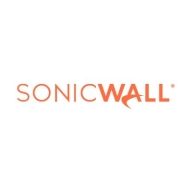

Symantec Endpoint Detection and Response and SonicWall Capture Client compete in endpoint security. While Symantec leads in some areas, users find SonicWall superior due to its comprehensive features.
Features: Symantec Endpoint Detection and Response is appreciated for its advanced threat detection, remediation capabilities, and user-friendly interface. SonicWall Capture Client stands out with seamless integration with the firewall, holistic network protection, and a robust feature set. Users favor SonicWall for its comprehensive integration and feature-rich platform.
Room for Improvement: Users suggest improvements in the reporting functionality, threat intelligence, and user interface of Symantec Endpoint Detection and Response. For SonicWall Capture Client, users mention occasional stability issues, the need for more frequent updates, and enhancements in user experience. Both products could enhance technical aspects, but stability is a notable area for SonicWall.
Ease of Deployment and Customer Service: Symantec Endpoint Detection and Response gets mixed reviews for its initial setup complexity and responsive support. SonicWall Capture Client is praised for its straightforward deployment process and accessible support. Users find SonicWall easier to deploy and appreciate its customer service more.
Pricing and ROI: Symantec Endpoint Detection and Response is seen as a premium product with a higher setup cost. Users feel they get a good ROI despite the price. SonicWall Capture Client is considered more cost-effective, with users noting satisfactory ROI. SonicWall is favored for its balance of cost and value.
Partners can purchase single endpoints at prices equivalent to 1,000-endpoint deals, providing an advantage for managed security service provider partners.
While their escalation process is understandable, it can be time-consuming as all logs need to be provided multiple times across different service levels.
There are no restrictions on the scalability of SonicWall Capture Client.
The installation process is straightforward, requiring only five pilot installations to enable customers to complete the remaining installations independently.
SonicWall Capture Client is accessed via cloud-based management console.
One of the drawbacks is that I cannot use Advanced and Premier licenses within a single tenant, which can be problematic when users need to deploy different licenses.
XDR cannot be used unless MDR services are purchased with SonicWall.
The RAM usage is higher compared to SentinelOne, utilizing approximately 150 megabytes of memory.
SonicWall Capture Client offers a cost-effective solution that's cheaper compared to other vendors like CrowdStrike.
Machine learning is particularly effective due to SonicWall sandboxing's threat intelligence database of approximately 7.1 billion entries.
One is that users can use the sandbox of SonicWall, which is called Capture ATP for free.
| Product | Market Share (%) |
|---|---|
| Symantec Endpoint Detection and Response | 0.6% |
| SonicWall Capture Client | 0.6% |
| Other | 98.8% |


| Company Size | Count |
|---|---|
| Small Business | 10 |
| Midsize Enterprise | 1 |
| Company Size | Count |
|---|---|
| Small Business | 15 |
| Midsize Enterprise | 7 |
| Large Enterprise | 9 |
SonicWall Capture Client is a unified client platform that delivers multiple endpoint protection capabilities, including next-generation malware protection and application vulnerability intelligence. It leverages cloud sandbox file testing, comprehensive reporting, and enforcement for endpoint protection.
Symantec Endpoint Detection and Response (EDR) is a powerful security solution designed to help organizations proactively detect, investigate, and mitigate advanced threats across their endpoint environments. As part of Broadcom's cybersecurity portfolio, Symantec EDR provides comprehensive visibility into endpoint activities, enabling security teams to quickly identify and respond to threats that evade traditional defenses.
Symantec EDR leverages machine learning, behavioral analysis, and global threat intelligence from Symantec's vast network to detect sophisticated threats, including zero-day attacks, ransomware, and advanced persistent threats (APTs). This allows organizations to identify malicious activities early and respond swiftly to mitigate potential damage. The solution offers automated response options that enable security teams to contain and remediate threats quickly.
Symantec EDR provides detailed forensic capabilities, allowing security analysts to dive deep into endpoint data, investigate incidents thoroughly, and understand the scope and impact of attacks. Features such as timeline analysis, incident graphing, and the ability to isolate endpoints enhance investigative efforts and support effective remediation strategies.
With its centralized management console, Symantec EDR offers visibility across the entire endpoint environment, regardless of the operating systems or whether endpoints are on-premise or remote. Symantec EDR seamlessly integrates with other Symantec security solutions, enhancing its detection capabilities and enabling a unified approach to threat management. Its scalable architecture ensures that businesses of all sizes can benefit from its advanced security features without compromising performance.
Quickly discover and resolve threats with deep endpoint visibility and superior detection analytics, reducing mean time to remediation. Overcome cyber security skills shortages and streamline SOC operations with extensive automation and built-in integrations for sandboxing, SIEM, and orchestration.
Fortify security teams with the unmatched expertise and global scale of Symantec Managed Endpoint Detection and Response services.
Roll out Endpoint Detection and Response (EDR) across Windows, macOS, and Linux devices using Symantec Endpoint Protection (SEP)-integrated EDR or a dissolvable agent.
We monitor all Endpoint Detection and Response (EDR) reviews to prevent fraudulent reviews and keep review quality high. We do not post reviews by company employees or direct competitors. We validate each review for authenticity via cross-reference with LinkedIn, and personal follow-up with the reviewer when necessary.